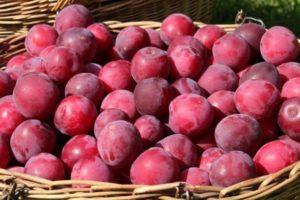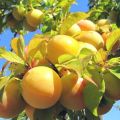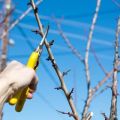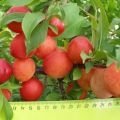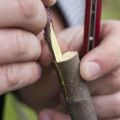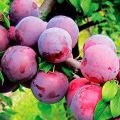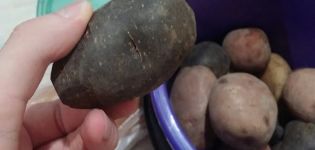Description and characteristics of Hungarian plum varieties, planting and care
The type of plum called Vengerka unites a number of varieties of this crop, and due to its high yield, unsurpassed taste, it is widely popular both among beginner lovers of fruit and berry trees, and among gardeners with many years of experience. Hungarian has excellent frost resistance, therefore, enviable adaptability to certain climatic conditions makes it possible to grow it in regions with low temperatures.
Characteristic features of the Hungarian plum
The varieties of this variety of plum, brought to Russia from Hungary, are almost ubiquitous, and each region has its own zoned species of these fruit and berry trees.
External description of the tree
Medium-sized trees, reaching a height of 3-4.5 meters, with a crown slightly elongated towards the top, typically oval or pyramidal in shape. Shoots close together are marked with a characteristic reddish-brown color. The viability of these plum trees has been observed for 25-30 years.
Fruits and ripening dates
The fruits of the Vengerka plum trees have the following distinctive features:
- large sizes - up to 6 centimeters long and about 4-5 centimeters in diameter;
- elongated, slightly oval shape;
- asymmetric view - on the one hand, the fruit lobule is convex, on the other - flattened and smaller;
- deep dark color - with a bluish, lilac-purple tint;
- a waxy coating of a grayish-smoky color;
- a bone that is rough to the touch, easily separated from the pulp;
- juicy inside with elastic structure.
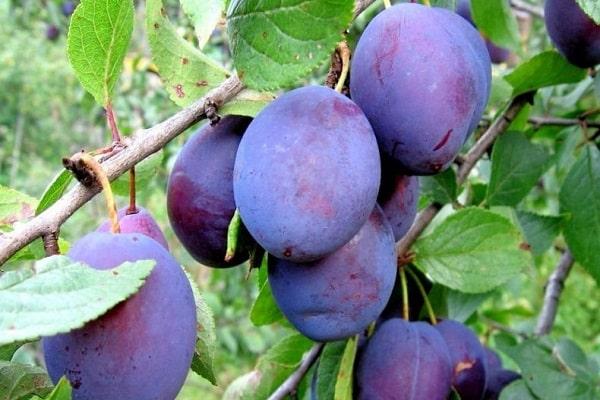
Self-fertile varieties are distinguished by high yields, late periods of fruiting. From the beginning of planting, the first fruiting of the tree occurs only after 6-8 years. In modern hybrids - after 4 years.
Plum ripening times vary - mid-ripening varieties are ready for harvest in the last decade of August, while late types of Hungarian are harvested until the end of September.
Frost and drought resistance
Trees do not die during periods of prolonged drought, and also easily tolerate 20-degree frosts.
Disease and insect immunity
The described type of plum has a high immunity to diseases and pests. But still, one should not forget about the prevention of diseases of this garden culture.
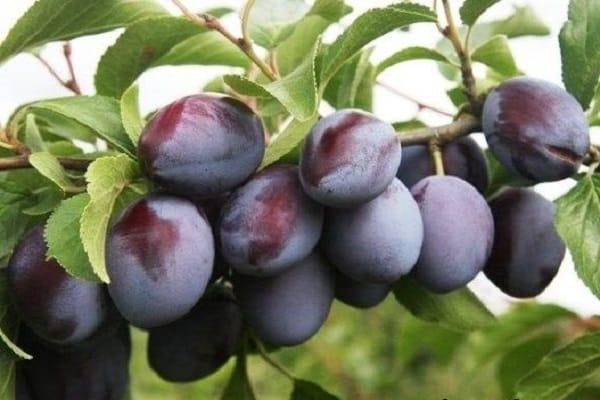
Popular varieties of Hungarian
Numerous varieties of the described type of plum, due to their characteristic features and individual characteristics, can grow in certain climatic conditions.
For example, the popular homemade or, in other words, ordinary plum, which is a classic of the Hungarian type of this culture, loves loamy soil and the southern regions of Russia.
Moscow (Tsaritsyn)
The oldest variety of Hungarian, zoned under the Central Region of Russia. The trees of this plum variety are characterized by:
- a certain height (up to 3 meters);
- spherical spreading crown;
- late maturity and fruiting at 7-8 years;
- purple-red color of fruits, each weighing up to 30 grams;
- self-fertility and high productivity.
The fruits of this variety are small in size and have an ordinary taste.
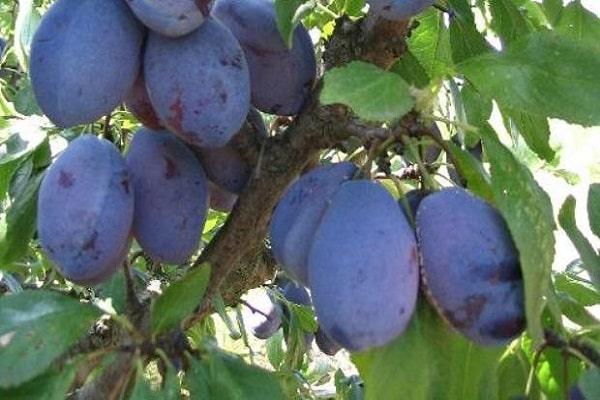
Korneevskaya
This type of plum is zoned under the region of the Central Black Earth Region; is an:
- a medium-sized tree, reaching a height of 4 meters;
- self-fertile and starting their first fruiting at 4 years old;
- a culture with oval dark purple plums and yellow insides;
- a high-yielding hybrid variety with fruits weighing up to 30 grams.
It was named after its creator, the scientist Korneev.
Pulkovskaya
The variety is characterized by high winter hardiness, suitable for cultivation in the Leningrad region and is characterized by:
- a certain height - up to 3-4 meters;
- spreading crown;
- the burgundy-red color of the fruits themselves interspersed, weighing up to 25 grams each;
- fruits with a sweet and sour aftertaste;
- excellent yield.
- high resistance to clasterosporium disease.
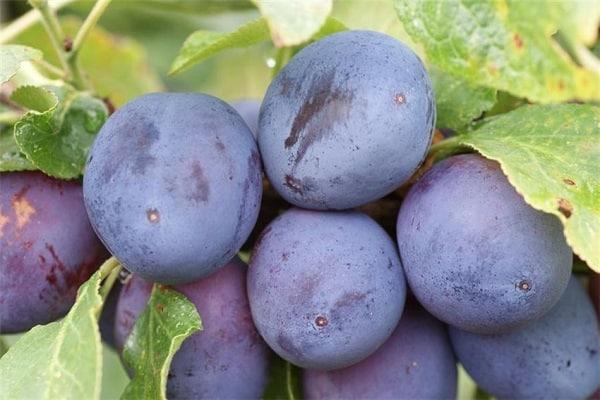
Kuban
The plum variety is vigorous and relatively resistant to cold, drought and disease. A variety has been developed for growing in the Krasnodar Territory and Adygea. Trees have:
- bulky spherical fruits, up to 35 grams each;
- greenish-yellow flesh of dark-gray fruit;
- long and thick stalk;
- fruiting for 6 years after planting;
- sufficient yield.
New
The variety is suitable for growing in the Lower Volga region and the North Caucasus. The described species has the following features:
- resistance to cold and drought;
- susceptibility to attack by a pest - moth;
- short stature;
- low yield.
The oval-shaped fruit with blue skin has a tasty and juicy pulp.
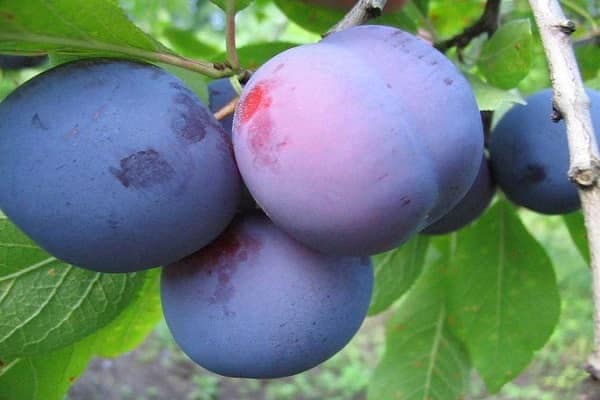
Belarusian
This variety is inherent in:
- average height - the tree reaches 3.5 meters in length;
- thickening of the crown;
- large, purple-colored fruits, 40 grams each;
- orange pulp - sourish in taste;
- fruiting for 3 years after planting.
The variety is only partially self-fertile.
Italian
Heat-loving variety and very vulnerable. Growing in arid areas, it sheds ovaries; in regions with cold temperatures, it can freeze out. Trees possess:
- sufficient height - up to 5 meters;
- voluminous crown;
- dark blue, sweet fruits;
- excellent fruiting.

Amazing
This variety of plum was bred in Ukraine, it grows there. This variety corresponds to:
- low resistance to frost;
- the need for pollinators - the variety is not self-fertile;
- excellent taste of fruits of purple color, teardrop-shaped;
- the weight of each fruit is up to 30 grams;
- bone easily separated from the pulp.
Donetsk
The described plum variety is different:
- high cold resistance;
- early fruiting - about 4 years from planting;
- self-fertility;
- medium, slightly pointed upwards fruits, up to 30 grams each.
Voronezh
This plum variety needs pollinators. The Voronezh variety is characterized by:
- fruiting for 5 years;
- average cold resistance;
- ripening of the crop in the first decade of September;
- late leaf fall;
- quick recovery from freezing;
- large purple fruits, up to 35 grams each;
- sweetish pulp.
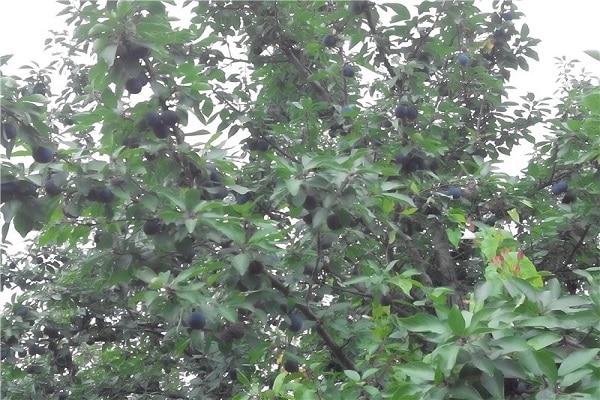
Michurinskaya
The variety is ideal for processing plums into juice or making baby food from it. The variety is zoned under the Southern Territories and the Central Black Earth Region. Small fruits have a tender and juicy pulp.
Important! The tree needs support, both in winter, due to snow, and during fruiting due to the abundance of fruits.
Bogatyrskaya
In this variety, the twigs leave the trunk at a right angle, so they can break during the fruiting period. Trees have the following features:
- resistance to bad weather;
- fruiting for 5 years;
- high yield;
- rounded fruits weighing up to 40 grams;
- sweet and sour aftertaste.
Ordinary
The common Hungarian variety grows in the South and in the Central Russia. A crop with a powerful crown and voluminous fruits up to 45 grams, rarely gets sick and has a yield of up to 60, or even more, kilograms per year.
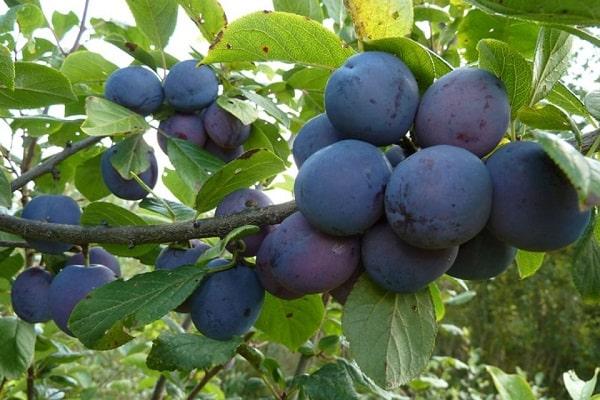
Dubovskaya
The variety is zoned for the Volgograd region and differs in:
- high stature;
- medium frost resistance;
- small fruits;
- fruiting for 5 years after planting;
- partial self-fertility;
- sweet and sour taste of the fruit.
Pear-shaped
The Krasnoyarsk Territory, the Volga region and Siberia are the main growing regions of this type of plum. The variety is marked with the following distinctive features:
- a characteristic influx in the area of the stalk, similar in appearance to a pear;
- fruits of red color - weighing up to 35 grams;
- tall up to 5 meters;
- resistance to frost, diseases and pests.
Ural
The variety is zoned for the climatic conditions of the Urals. The name contains the word Hungarian, in fact, the variety refers to Canadian plums.

Hungarian
A species that unites all varieties, with a high yield, which came to the Balkans, presumably from Asia. Used to make prunes.
Features of planting and crop care
The culture is unpretentious to care for, but still the process of growing plums is laborious and may require some knowledge and skills from the gardener.
Seat selection
Plum is a thermophilic culture, which is why planting Hungarian in lowlands, on damp and little sun-warmed soils, is not recommended. Plum trees grow well on hills, in sufficiently lit places, without winds and drafts. For planting plum seedlings, the southern and western sides of the infield are especially suitable.

Soil requirements
For normal development, this type of plum will require loose soil with sufficient acidity. The root system of these trees is located at a depth of up to 0.4 meters, and therefore the depth of the groundwater should not exceed half a meter.
Sapling selection
Particular attention should be paid to seedlings, the root system of which should be young, strong, without signs of dryness. The bark of young trees should not show any damage, and the trunk should not have bifurcations.
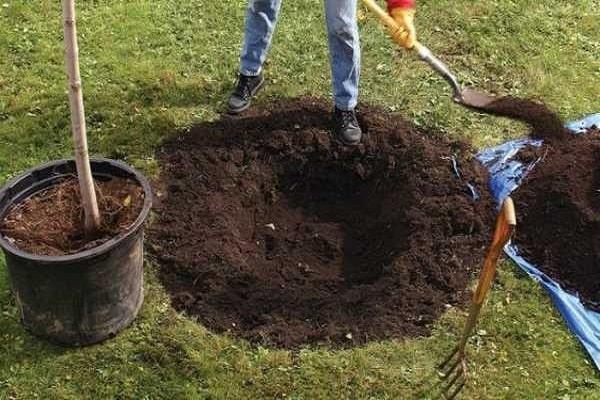
Landing
For planting plums, it is necessary to prepare a hole with a depth and width of 0.6 / 0.7 meters. Then proceed with the following step-by-step actions:
- hammer a peg into the center of the hole;
- Mix the fertile soil layer removed when digging a hole with humus;
- at the bottom, make a small mound from the above-described mixture of soil and humus;
- erect the seedling on a mound, straighten all its roots, and tie the trunk to a peg;
- to the planting soil, consisting of fertile soil with humus, in the spring, add components in the form of superphosphate, potassium salt, ash in a ratio of 300/60/400 grams;
- fill the hole, subject it to light tamping.
For normal rooting of plums, the soil after planting must be shed with water (3 buckets).
Watering frequency
The described culture is hygrophilous, therefore, at the moments of ovary formation and fruit ripening, it needs watering. In order for the fruits not to fall or dry out, the soil under the trees must be moistened every season - up to 6 times, once pouring 4-5 buckets into the trunk circle.
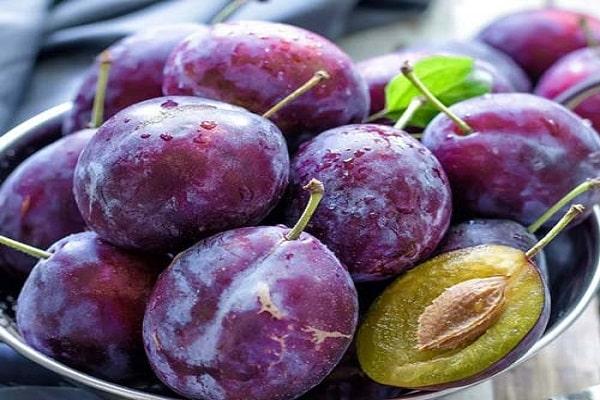
Top dressing of young and adult trees
Every year, with the onset of the spring period, when digging the soil, it is necessary to apply certain fertilizers containing nitrogen and natural organic matter, as well as phosphorus and potassium, to the near-trunk circle of plums.
Barrel circle care
In order for the tree in the area of the root collar not to rot and not freeze in winter, it needs some care of the near-stem circle. The soil needs to be regularly loosened, moistened, and after harvesting, mulched with manure.
Plum crown formation
Every year, it is necessary to resort to the so-called regulating pruning, during which young and weak shoots that thicken the crown must be removed.
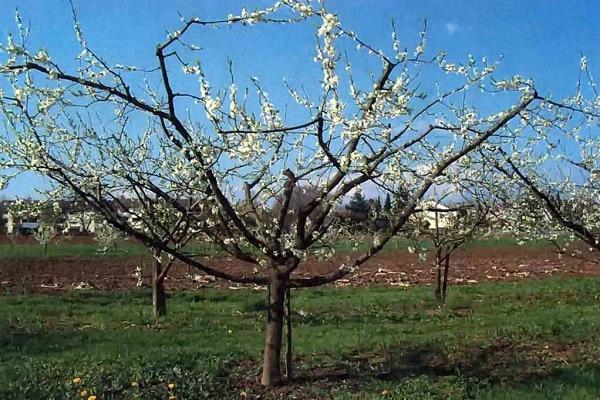
Mulching
Such an action in the spring will help to quickly activate the vital activity of the plum after wintering. To do this, a layer of compost or humus must be laid in the trunk circle. In the fall, after harvesting leaves and branches, rotted manure must be placed in the trunk circle to preserve moisture for the entire winter period.
Covering for the winter
If a harsh winter is expected, young plums should be covered - with the help of, for example, old bags, tying them around the plum trunks, using rags. Sprinkle mature trees in the near-trunk circle with earth and sawdust.

